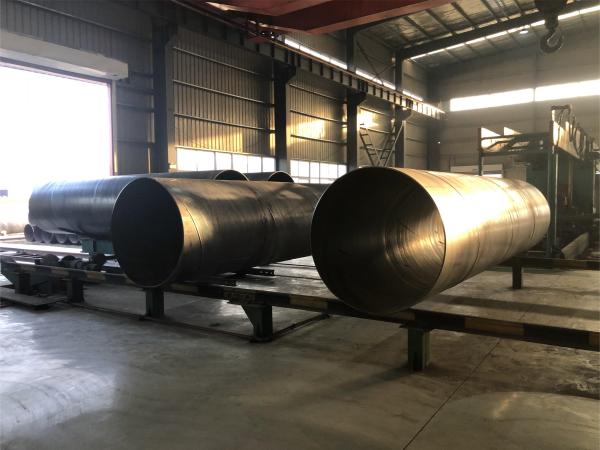How to repair the anti-corrosion layer of SSAW steel pipe?
When exporting anti-corrosion spiral steel pipes, in order to effectively protect the outer layer of the anti-corrosion spiral steel pipes, the outer layer of the spiral steel pipes must be packed. However, during the container loading process, the ports of the anti-corrosion spiral steel pipes will inevitably be damaged, because when loading, a forklift is usually used to lift the anti-corrosion spirals. At one end of the steel pipe, the friction between the forklift and the inner wall of the anti-corrosion spiral steel pipe will wear away part of the anti-corrosion layer. This requires timely repair of the anti-corrosion spiral steel pipe after the box is packed. The following are the detailed steps for repairing:

1. Remove the outer packaging of the anti-corrosion spiral steel pipe port so that the damage to the anti-corrosion layer can be seen more clearly.
2. Adjust the anti-corrosion materials required for the anti-corrosion spiral steel pipe (it is best not to add paint to the anti-corrosion paint).
3. Check the anti-corrosion spiral steel pipes in sequence from the bottom of the container, and mark any damage with a marker.
4. Use No. 6 roller to repair the marked anti-corrosion spiral steel pipe.
5. After repairing, wrap it with outer packaging tape and stick it with transparent tape.
Introduction to quality inspection methods for spiral steel pipes
1.Judgment from the surface, that is, visual inspection:
The appearance inspection of welded joints is a simple and widely used inspection method. It is an important part of finished product inspection. It mainly detects defects on the weld surface and dimensional deviations. Inspection is generally carried out through naked eye observation with the help of tools such as standard templates, gauges and magnifying glasses. If there are defects on the surface of the weld, there may be defects inside the weld.
2.Inspection by physical methods:
Physical inspection methods are methods that use some physical phenomena to measure or inspect. The inspection of internal defects in materials or workpieces generally uses non-destructive testing methods. Non-destructive testing includes ultrasonic testing, radiographic testing, penetrant testing, magnetic testing, etc.
3.Strength test of pressure vessels:
In addition to sealing tests, pressure vessels must also undergo strength tests. There are two common types: water pressure test and air pressure test. They can both test the tightness of welds on vessels and pipes operating under pressure. The air pressure test is more sensitive and faster than the water pressure test. At the same time, the product after the test does not need to be drained, which is especially suitable for products with difficult drainage. But the test is more dangerous than the hydrostatic test. When conducting tests, corresponding safety technical measures must be observed to prevent accidents from occurring during the test.
4.Tightness test:
For welded containers that store liquid or gas, the tightness test can be used to detect non-density defects in the weld seam, such as penetrating cracks, pores, slag inclusions, incomplete welding and loose tissue, etc. Tightness testing methods include: kerosene test, water-carrying test, water flushing test, etc.
5.Hydrostatic test :
Each steel pipe should be subjected to a hydrostatic test without leakage. The test pressure is calculated as follows: P=2ST/D. In the formula, S-the test stress of the hydrostatic test, Mpa. The test stress of the hydrostatic test is calculated accordingly. The steel strip standard stipulates the selection of 60% of the minimum yield strength (Q235 is 235Mpa). Stabilizing time: D<508 test pressure holding time is not less than 5 seconds; D≥508 test pressure holding time is not less than 10 seconds
6.Non-destructive testing:
The repair welds of steel pipes, steel strip butt welds and circumferential seams should be inspected by X-ray or ultrasonic waves. 100% SX-ray or ultrasonic inspection should be carried out for steel-directed spiral welds used for conveying flammable ordinary fluids, and X-ray or ultrasonic inspection should be carried out for spiral welds of steel pipes used for conveying ordinary fluids such as water, sewage, air, heating steam, etc. Ultrasonic inspection and spot check (20%).






 English
English Español
Español بالعربية
بالعربية











 Phone :
Phone :  Whatsapp :
Whatsapp :  Email :
Email : 


